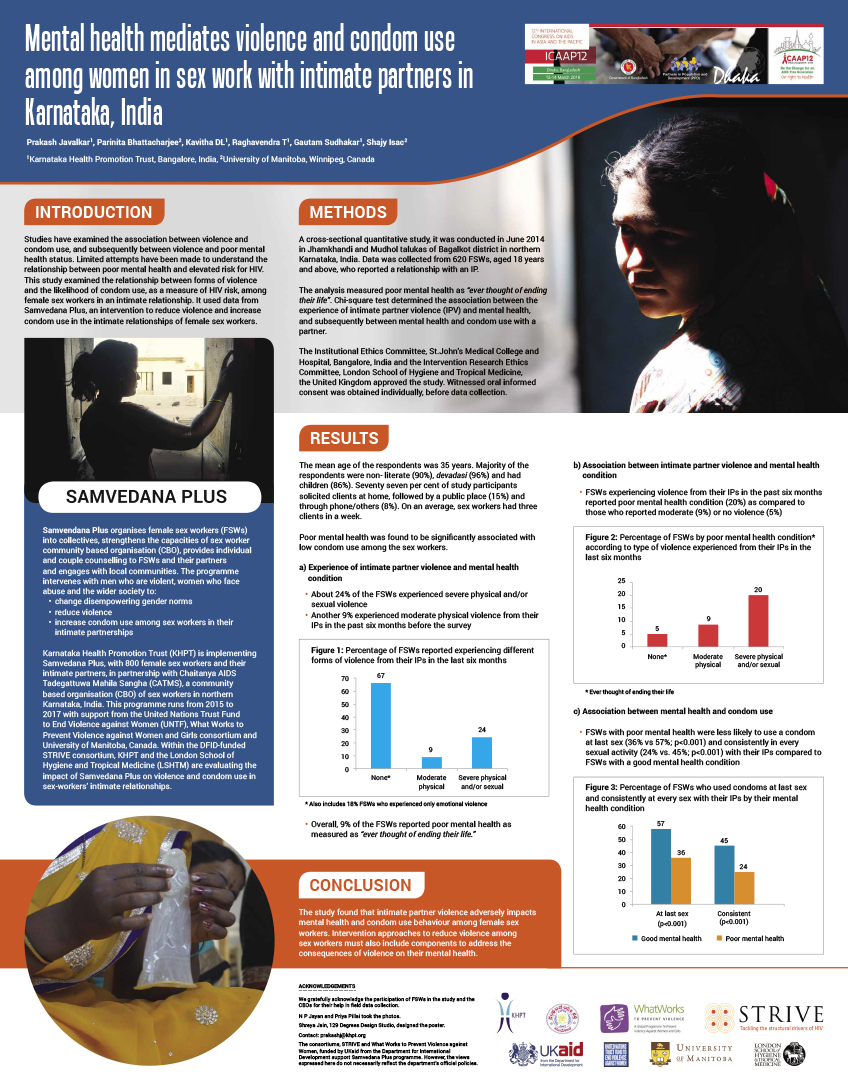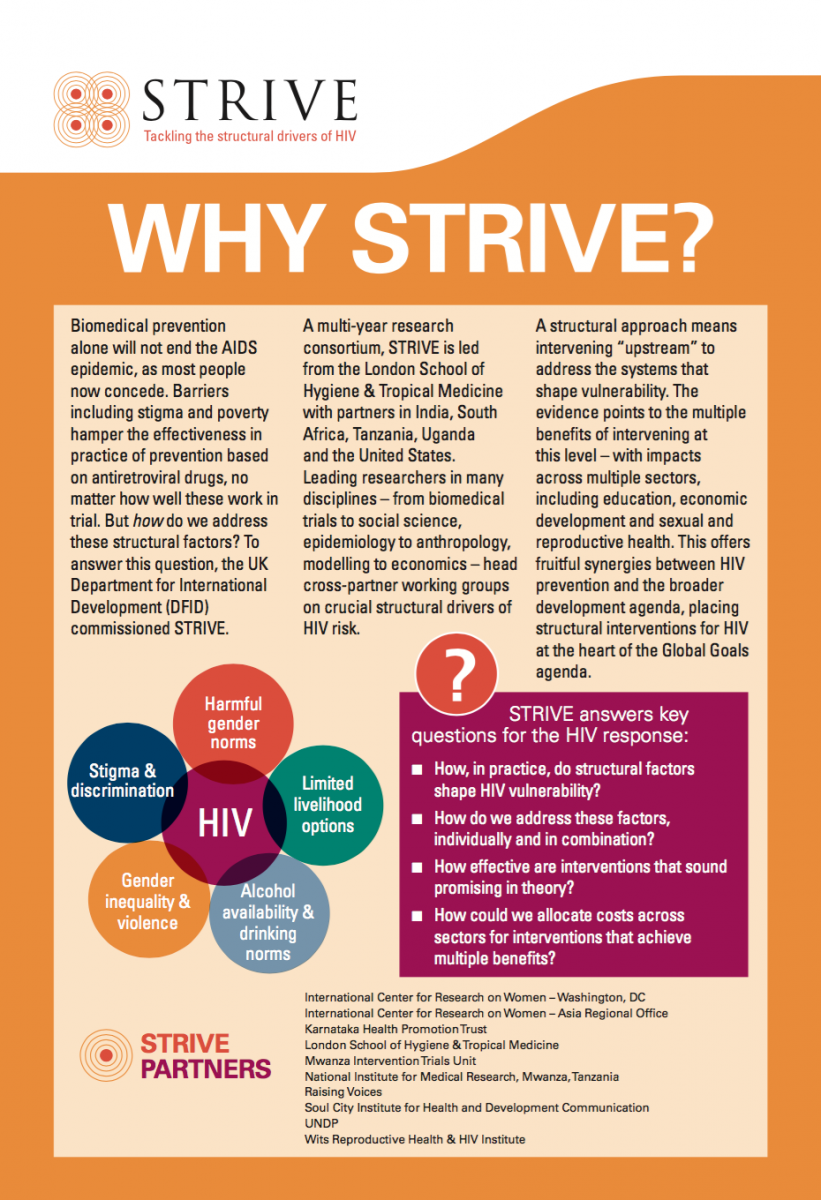This poster was presented at the 12th International Conference on AIDS in Asia and the Pacific, 12-14 March in Dhaka, Bangladesh.

You can find other related resources on our Samvedana Plus project page.
Reducing violence and increasing condom use in the intimate partnerships of female sex workers: study protocol for Samvedana Plus, a cluster randomised controlled trial in Karnataka state, south India
Female sex workers (FSWs) are at increased risk of HIV and STIs compared to women in the general population, and frequently experience violence in their working and domestic lives from a variety of perpetrators, which can enhance this risk. While progress has been made in addressing violence by police and clients, little work has been done to understand and prevent violence by intimate partners (IPs) among FSW populations.
Greentree II: Violence against Women and Girls, and HIV
Report on a high-level consultation on the evidence and implications
Greentree II
In interviews, three participants reflect on Greentree II, a high level consultation on HIV and violence against women and girls.
Sunita Kishor, Director: Demographic Health Surveys, Maryland
Avni Amin, Technical Officer: Department of Reproductive Health and Research, WHO, Geneva
Pumulo Mandale, Director: Gender Rights Protection, Ministry of Gender and Child Development, Zambia
Maisha -- Life
Maisha means "life" in Swahili. Everyone wants to live happily with their families - violence between partners is bad for relationships and health. Specifically, intimate partner violence (IPV) is known to increase the risk of HIV infection.
This video outlines a programme in Mwanza, Tanzania to reduce IPV and thus reduce the risk of multiple health harms including HIV. Key steps in the project:
1. Researchers find out more about the problem
Why STRIVE?
What does the STRIVE research consortium do, and why? What are the over-arching messages from STRIVE's research and analysis? And how can you access STRIVE activities, materials and learning?
Download the brochure to find the answers.

ASSHH UK Conference: 'Critical conversations about HIV'
On 20 June 2016 STRIVE co-hosted a one-day meeting with ASSHH UK, a network that aims to bring together UK-based researchers working on HIV in the humanities and social sciences. The meeting was organised by researchers from the London School of Hygiene & Tropical Medicine, University of Glasgow, University of Northampton, Goldsmiths and the School of Oriental and African Studies, with a small grant from the Wellcome Trust as well.
Mobilising communities to end violence against women: Findings from the SASA! study – Tanya Abramsky
Tanya Abramsky presents analyses from the SASA! study, a cluster randomised trial of a community mobilisation intervention to prevent violence against women and reduce HIV risk in Kampala, Uganda.
Is violence against women preventable? Findings from the SASA! study summarized for general audiences
The report focuses on the SASA! approach and is designed to make findings accessible to activists and programmers. Its key message: Violence is preventable!



